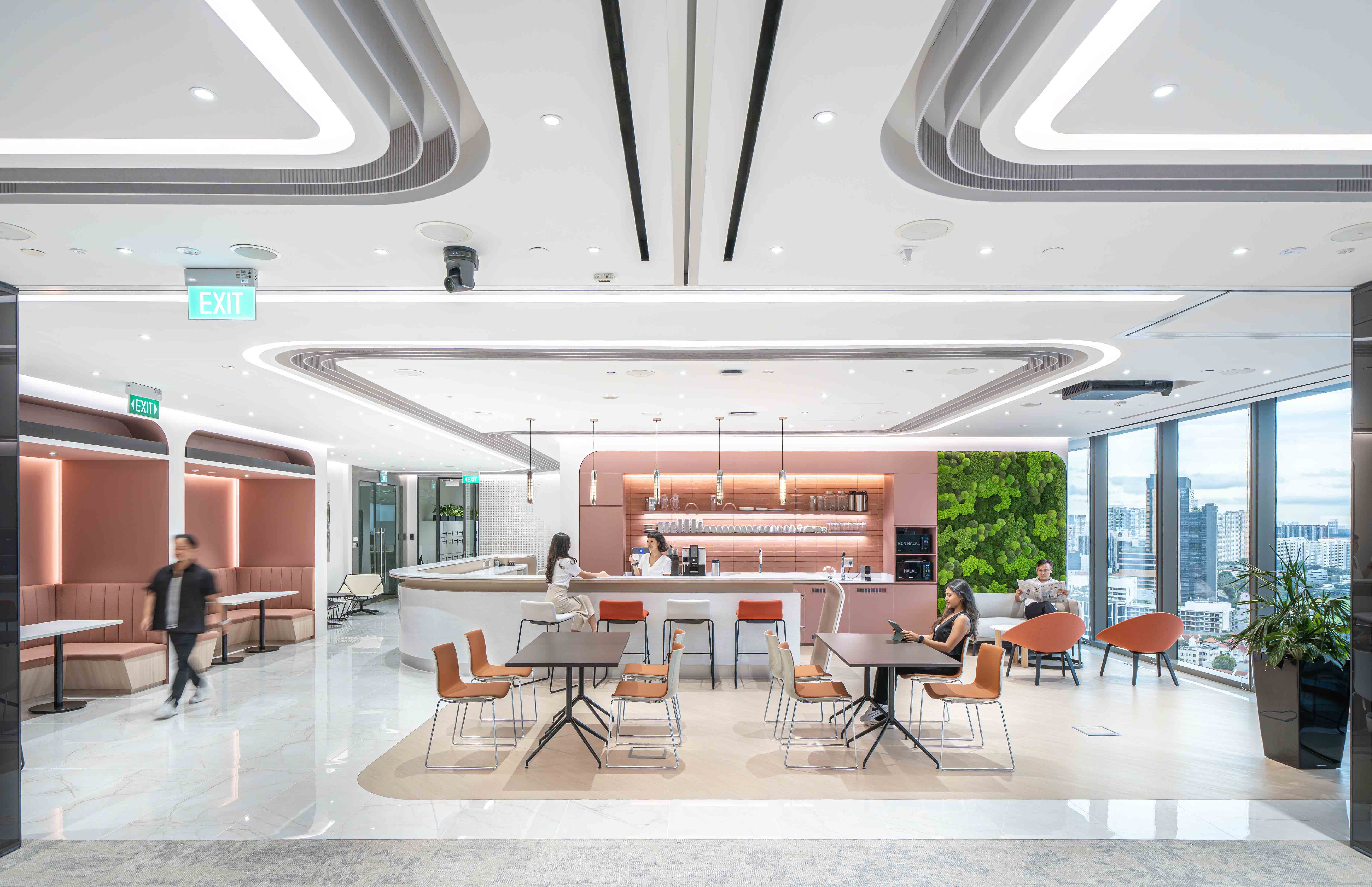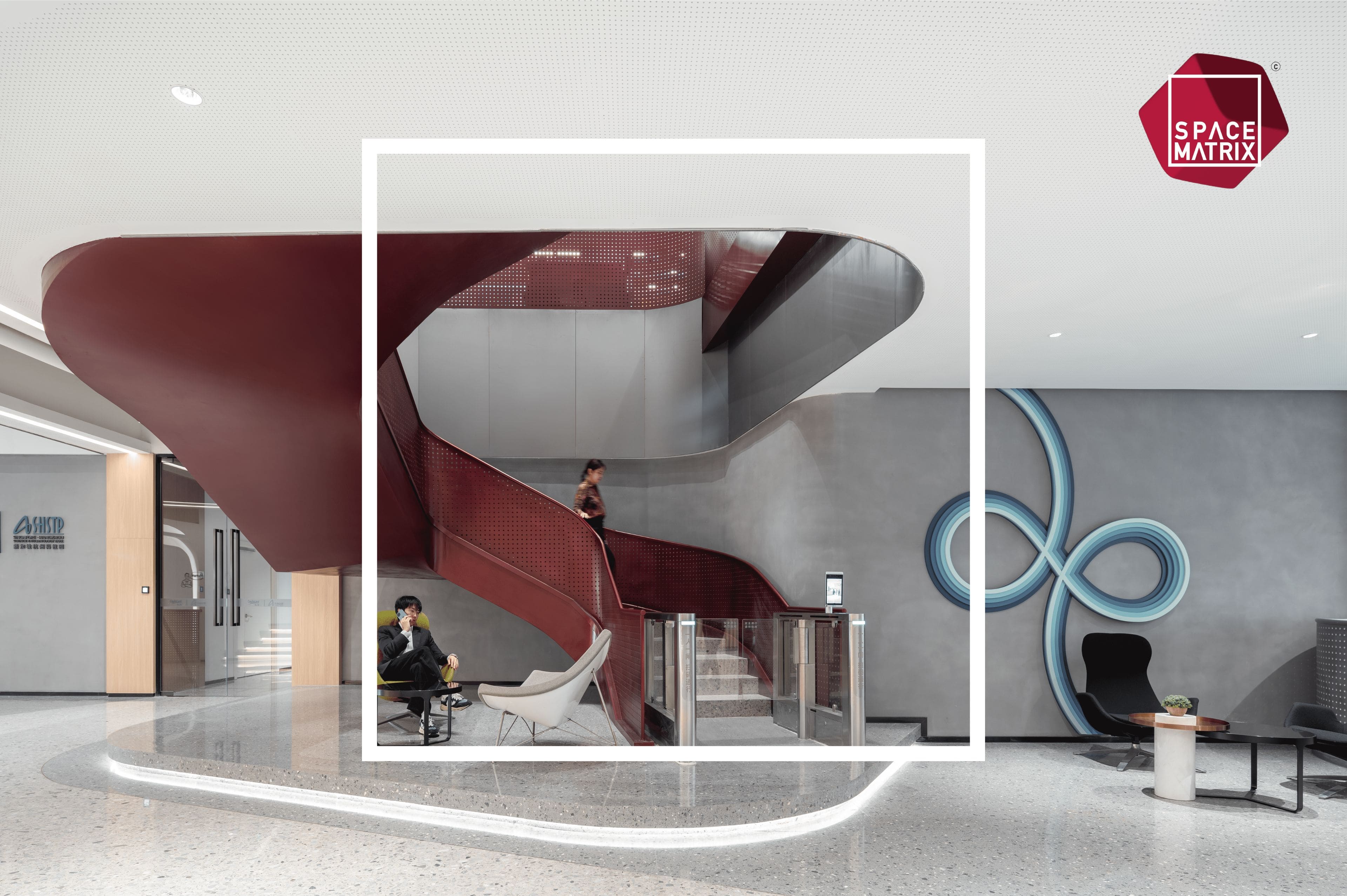The Importance of Prioritizing Wellness and Well-being in the Workplace
In today's fast-paced work environment, employers are recognising the importance of prioritising employee wellness and well-being. These factors not only contribute to a healthy and happy workforce but also have a direct impact on productivity and overall organisational success. In this blog post, we will explore key areas that can significantly influence employee wellness in the workplace, and look at office design concepts from Space Matrix that employ wellness-focused elements in their designs.
The Power of Biophilic Design
Biophilic design is an approach that incorporates natural elements, such as plants, natural light, and water, into the built environment. This design approach has been shown to have a positive impact on employee well-being and productivity. Research has shown that exposure to nature or nature-like elements in the workplace can reduce stress, increase creativity, and improve cognitive function. Biophilic design elements, such as living green walls, natural light, and access to outdoor views, can help create a more pleasant and healthy work environment for employees, leading to increased job satisfaction and well-being.
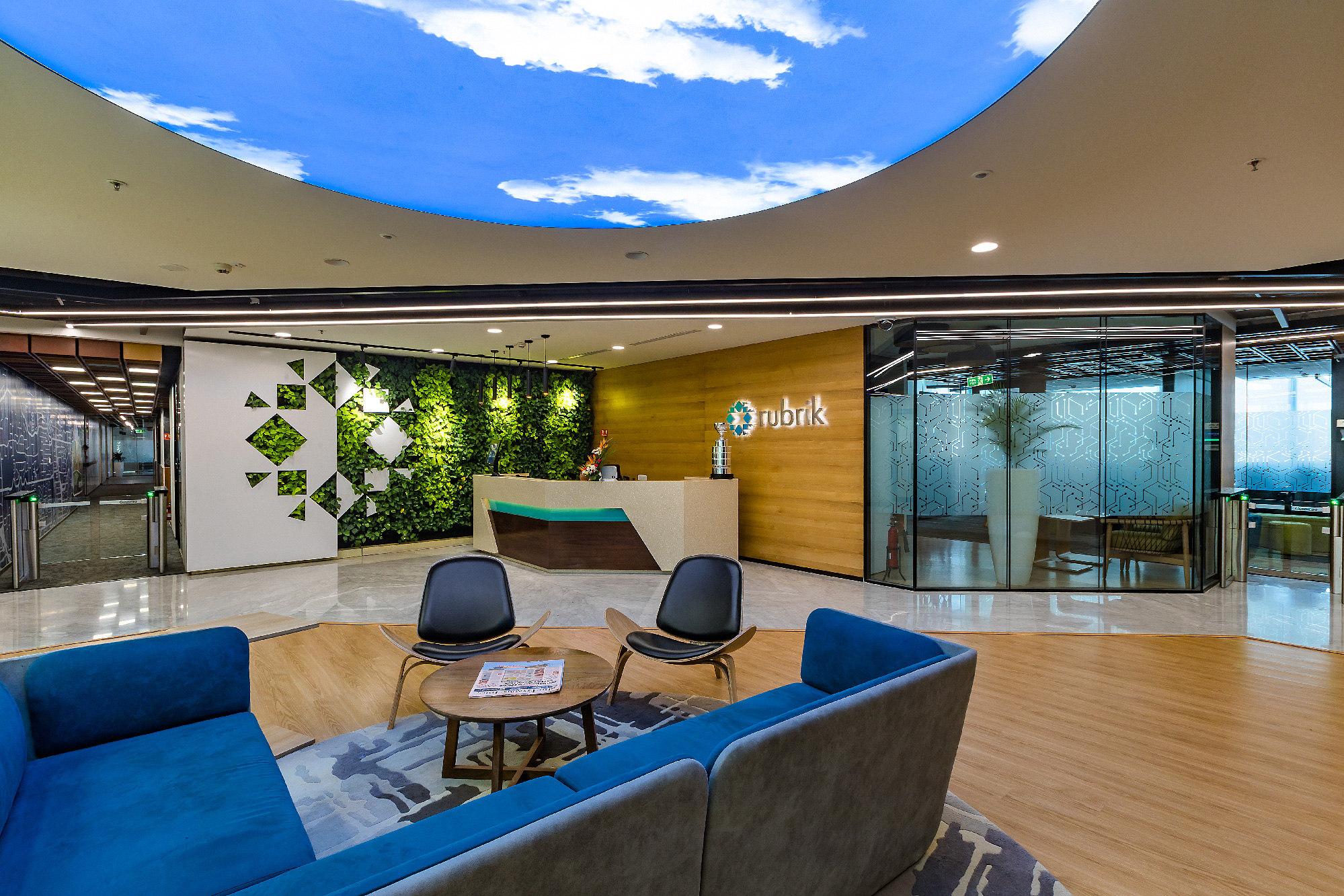
The Rubrik office prioritises sustainability and wellness to promote the mental and emotional health of its employees. The workplace design is carefully crafted by Space Matrix to provide ample access to nature, with abundant natural sunlight, outdoor views, and numerous biophilic elements such as potted plants and green walls. These elements help create a refreshing and rejuvenating environment, conducive to employee well-being. The office's base building features clean open spaces that allow employees to take relaxing strolls or engage in outdoor activities, further promoting physical activity and mental relaxation.
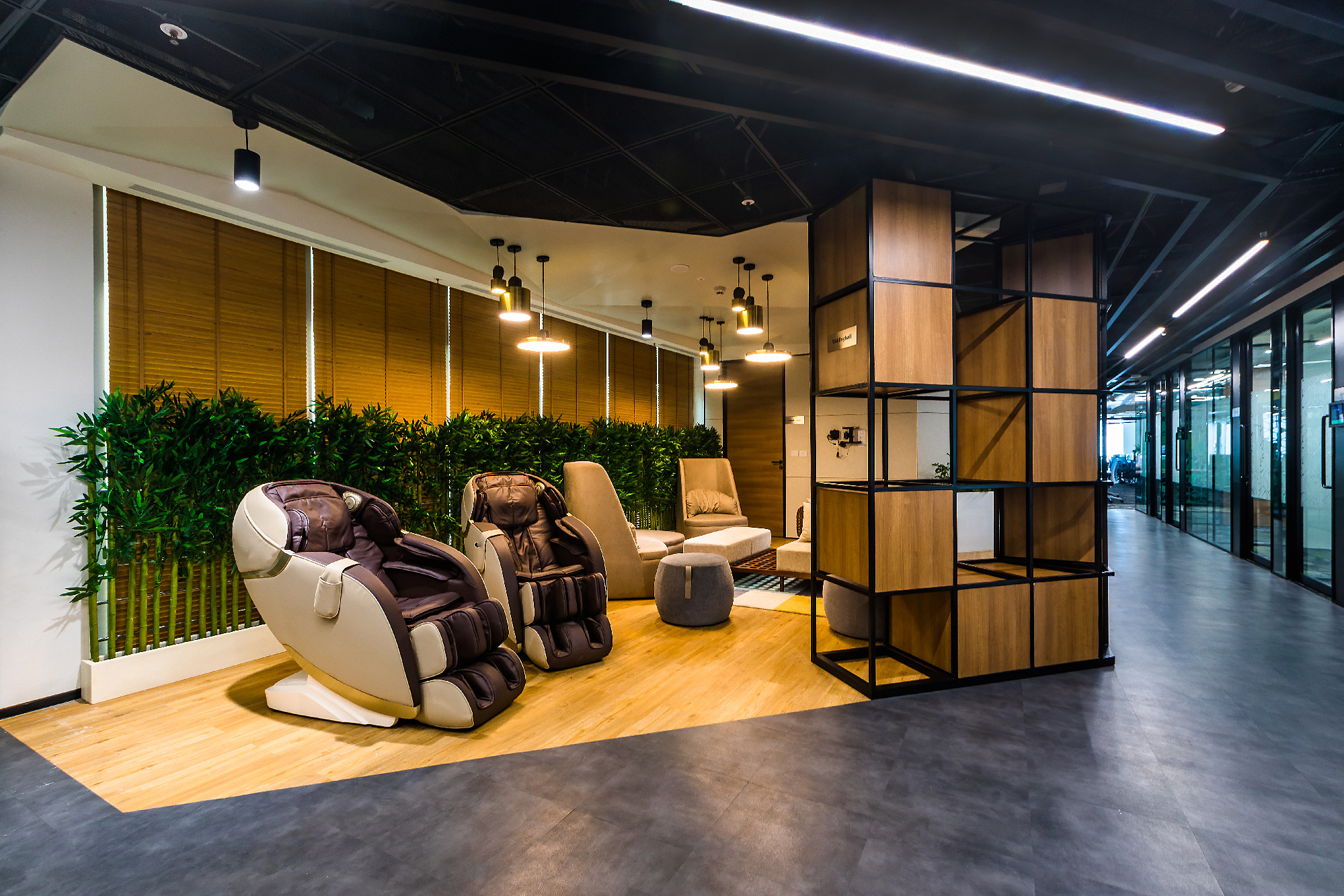
Natural light is one of the key elements in biophilic office design and Rubrik makes use of it, with over 60% of the floor area designed to receive ample natural light for more than 50% of the annual occupied hours. Automated blinds with sun-tracking technology are employed to reduce glare and provide exterior views, ensuring a comfortable working environment for the employees. This careful consideration of lighting design complies with the rigorous WELL standards and helps to promote a productive and healthy workspace, in line with the principles of wellness-focused design.
Creating a Sense of Community in the Workplace
Social connections and a sense of community are crucial for employee wellness. A supportive work community can provide employees with a sense of belonging, foster collaboration, and promote mental well-being. Employers can create a sense of community by encouraging team-building activities, providing spaces for social interactions, and promoting open communication among employees through workplace designs. Building a positive and inclusive work culture where employees feel valued and connected can have a significant impact on their overall well-being and job satisfaction.
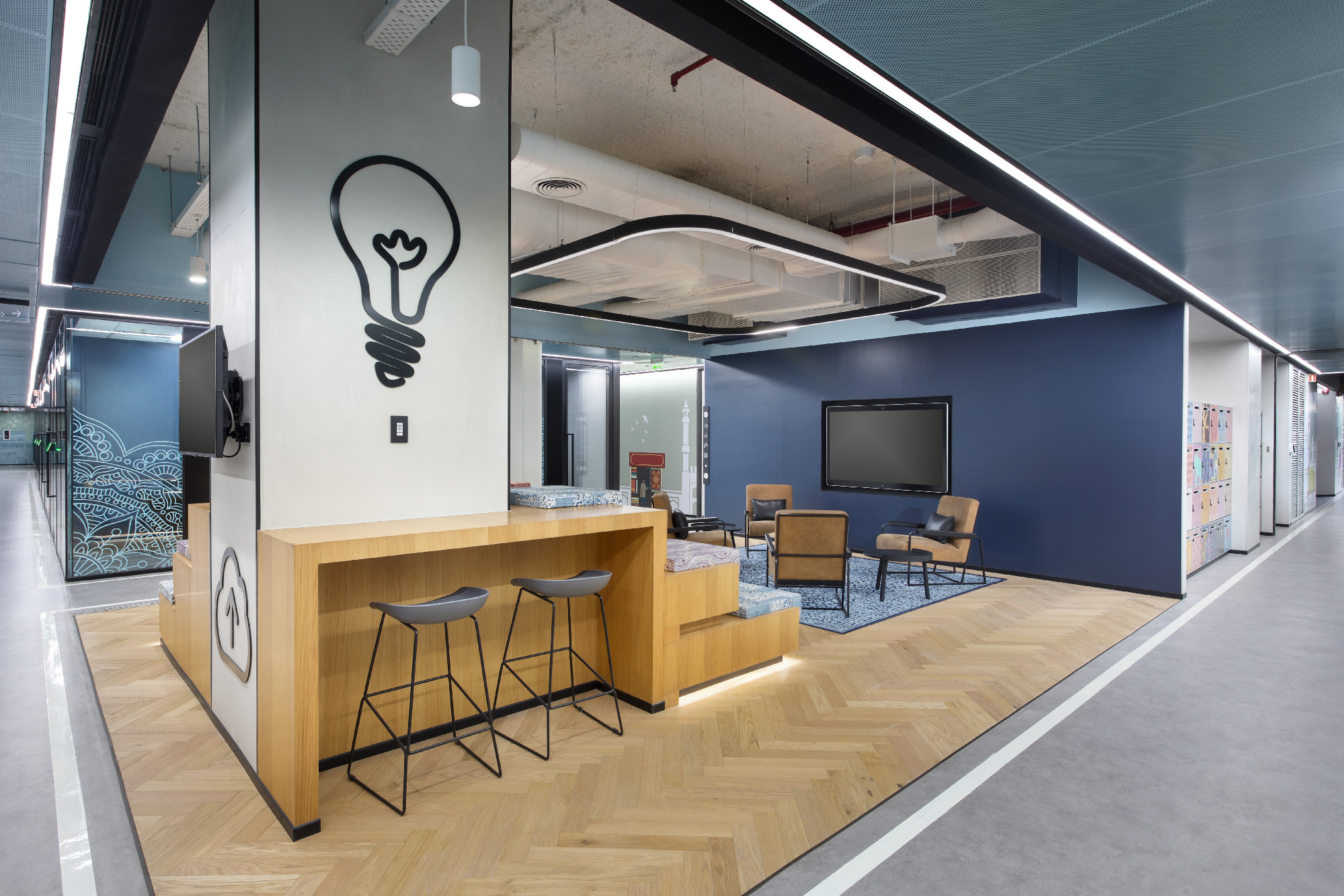
Gartner's workplace culture values in-person bonding and building a sense of community in its office space in Gurgaon. The reception area, cafeteria, and other major social spaces are all conveniently located on one dedicated floor. The cafeteria is a spacious and open area that can accommodate up to 450 people, featuring lightweight furniture that can be easily rearranged to accommodate groups of different sizes. Adjacent to the cafeteria, there are training rooms, lounges, and a coffee shop, providing ample opportunities for employees to connect and socialize. Not only are these places hotspots for collaboration but they are also spaces where the employees can wind down and socialise
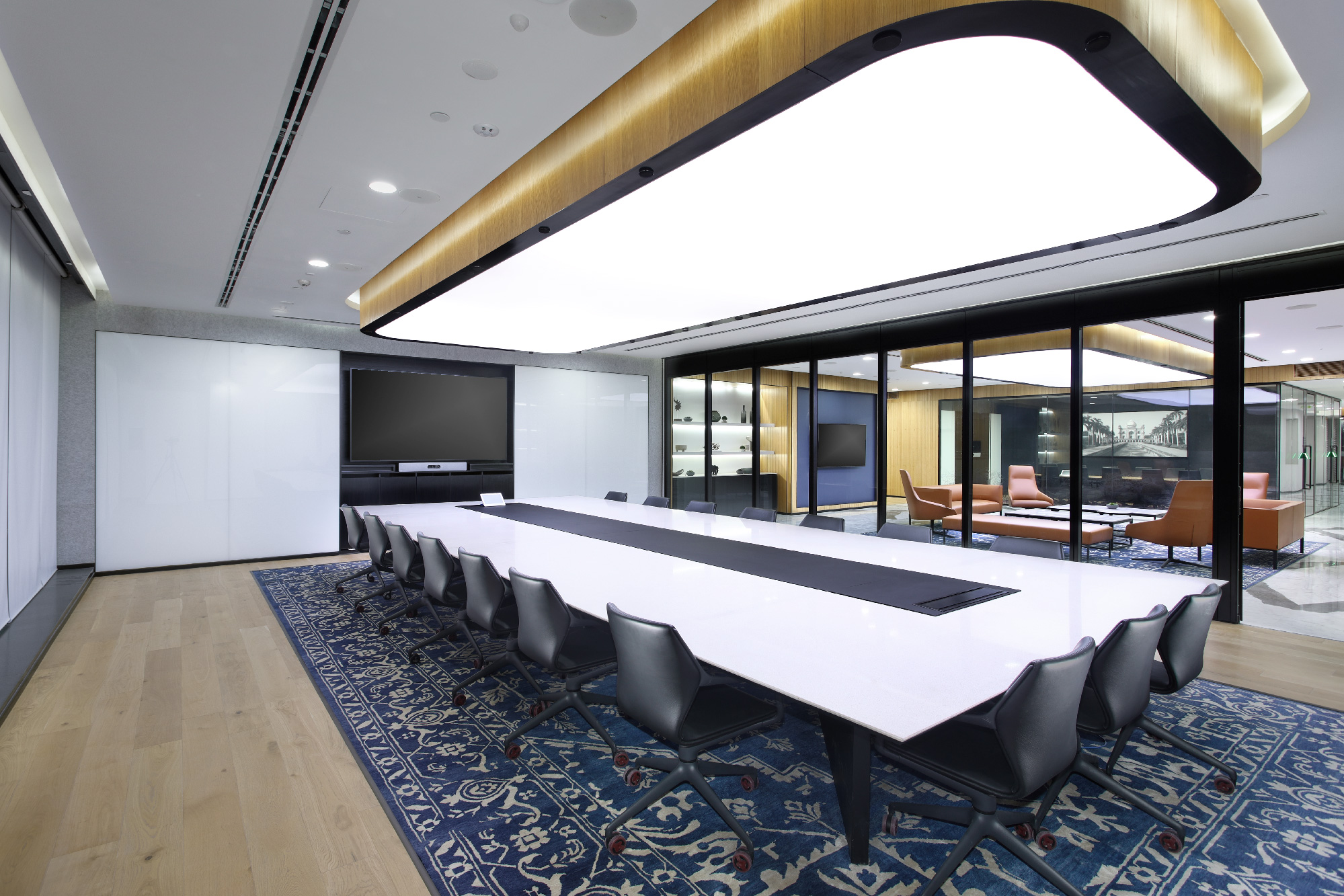
The social opportunities are not limited to just one floor, as each level of the office features two social hubs, such as the Tech Café. These hubs serve as casual meeting spots or places for personal interactions with colleagues over a cup of coffee. If discussions turn into more formal meetings, adjoining meeting rooms or phone booths are available as needed, ensuring flexibility and convenience for employees. The resulting outcome of these spaces is a strong sense of community and a workplace that accounts for the mental well-being of the workforce.
The Role of Technology in Promoting Wellness
Technology can play a significant role in promoting wellness in the workplace. For example, air filtration systems can improve indoor air quality, reducing the risk of respiratory problems and allergies. Monitoring tools, such as air quality sensors and digital meters, can provide real-time data on PM2.5 levels in the workspace, helping employers take proactive measures to maintain a healthy indoor environment. Additionally, lighting sensors can promote the usage of natural daylight in the office interior, which has been shown to positively impact mood and productivity. Automation of blinds can also provide employees with control over their environment, allowing them to optimize their comfort and well-being.
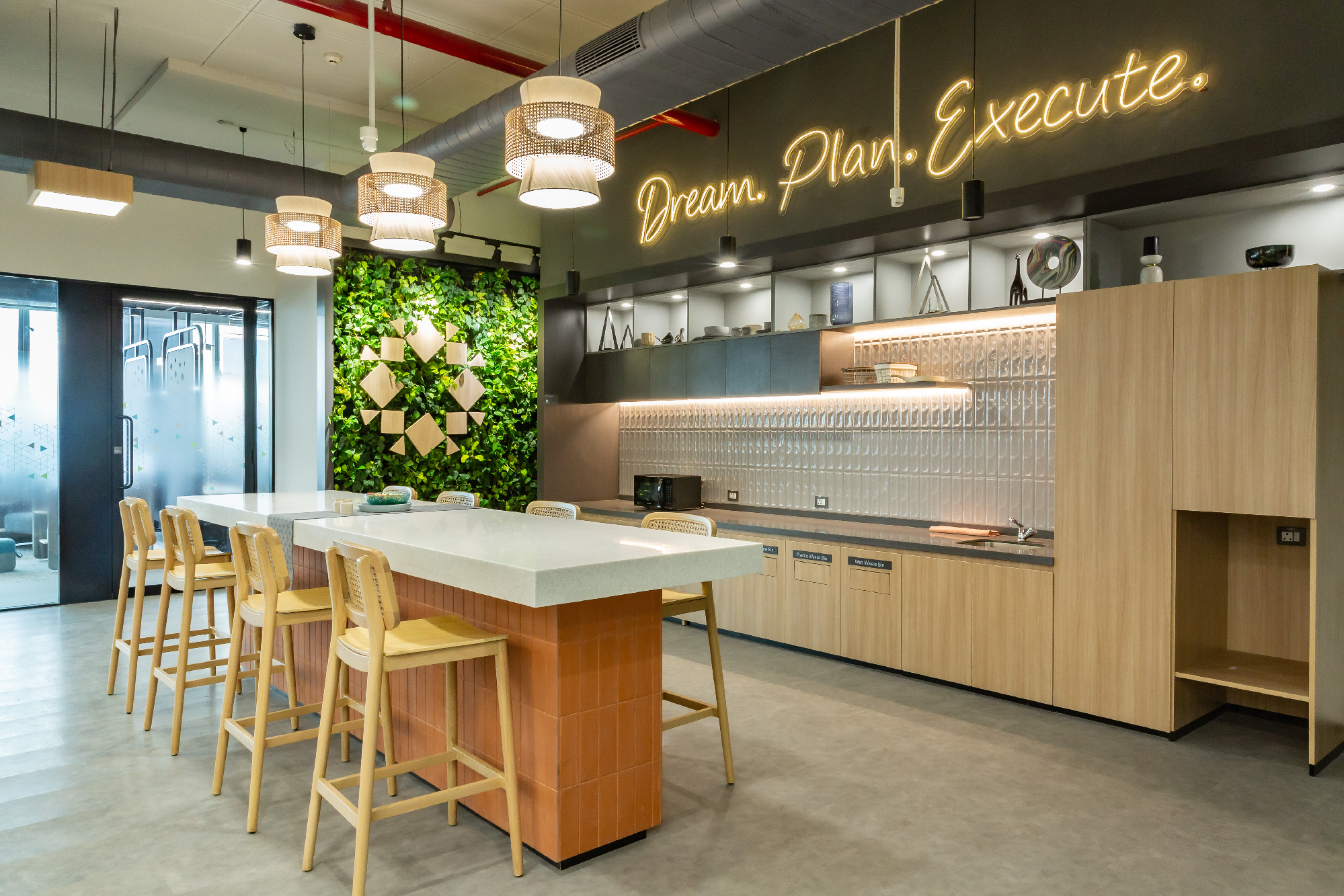
In the Rubrik India office, Space Matrix gave special attention to the quality of indoor air, which is one of the top parameters evaluated by WELL certification. Active air purification systems were installed, including treated fresh air units, humidifiers, chemical and carbon filters in the air handling units (AHUs), as well as decentralized air purifiers throughout the office space. Fresh air fans were also installed in areas such as the café, kitchen, and other frequently occupied spaces, ensuring a 30% increase in fresh air flow above the ASHRAE 62.1 standards. Prior to occupancy, these spaces were properly flushed out and well-ventilated in keeping with LEED requirements.
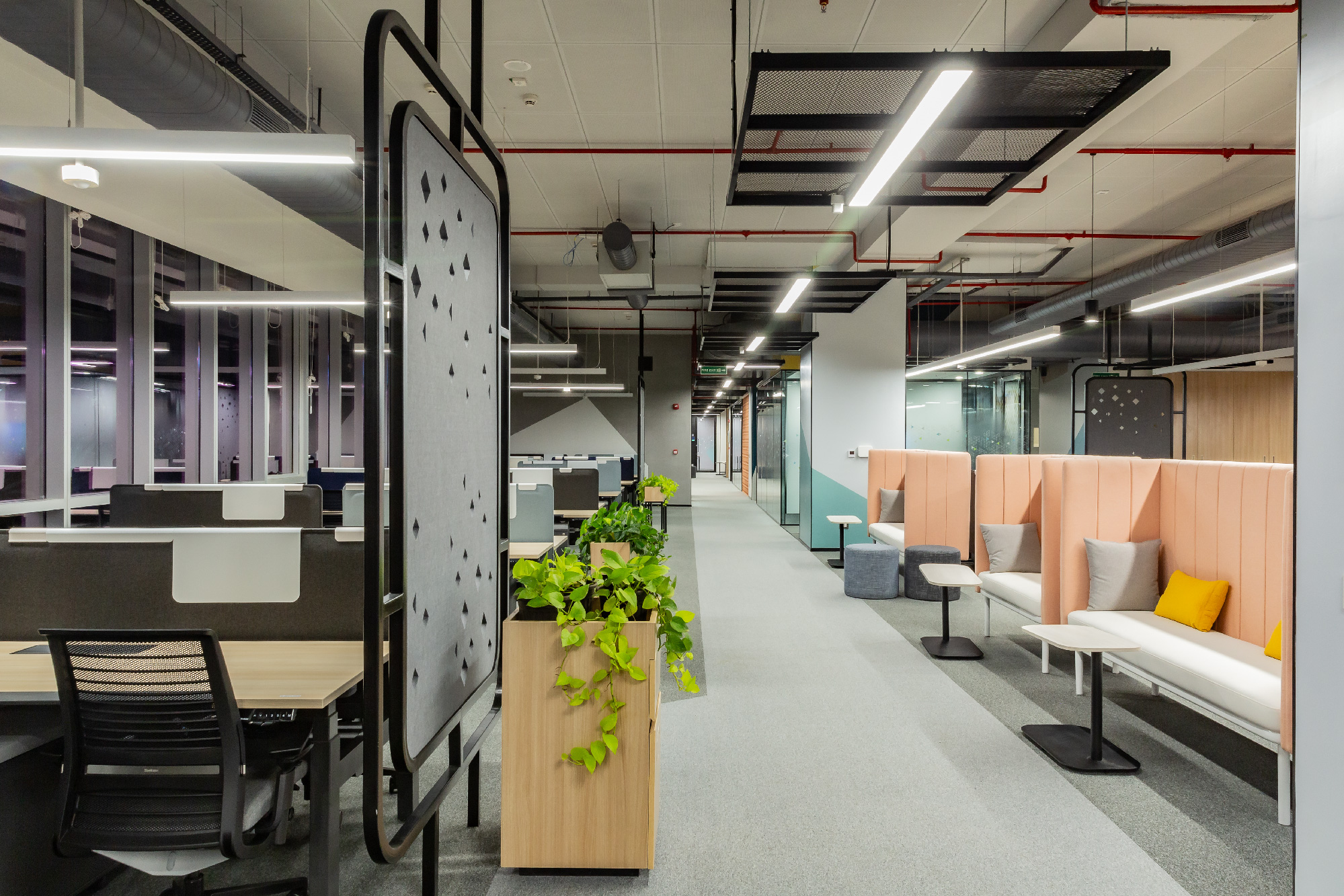
To maintain and enhance indoor air quality, the office interior was equipped with monitors that measure, record, and analyze various data parameters in real time. These analytical insights provide the facility manager with the necessary information to take appropriate actions, such as increasing cleaning cycles or implementing additional ventilation protocols, to ensure a healthy indoor environment for the occupants. This proactive approach to monitoring and improving indoor air quality aligns with Rubrik's commitment to creating a wellness-focused workplace.
Technology as a Wellness & Wellbeing Enabler
The integration of technology in design can not only improve the comfort of users with technologies like the circadian lighting that adjusts with the time of day to enhance user comfort, but it can also enhance wellness and well-being during the planning stage through the use of software. By utilizing software in the early stages of design, simulations and analysis of energy conservation measures and occupant comfort can be performed to identify areas that require improvement and optimize the built environment for wellness. This process can also assess sustainability indicators such as energy consumption, visual and thermal occupant comfort, and access to outdoor views, which can guide the design process towards creating spaces that prioritize employee wellness. By incorporating advanced solutions and office design concepts supported by software analysis, employers can create a healthier and more comfortable work environment that promotes employee well-being and productivity.
Prioritizing wellness and well-being in the workplace is crucial for employers who wish to create a healthy, happy, and productive workforce. By investing in these areas, employers can create a work environment that promotes employee well-being, leading to increased job satisfaction, engagement, and productivity. Ultimately, prioritizing employee wellness is a win-win for both employees and organizations, contributing to a thriving workplace. Want us to design and build you a WELL and LEED certification-worthy workplace?
Contact our experts today to get started!

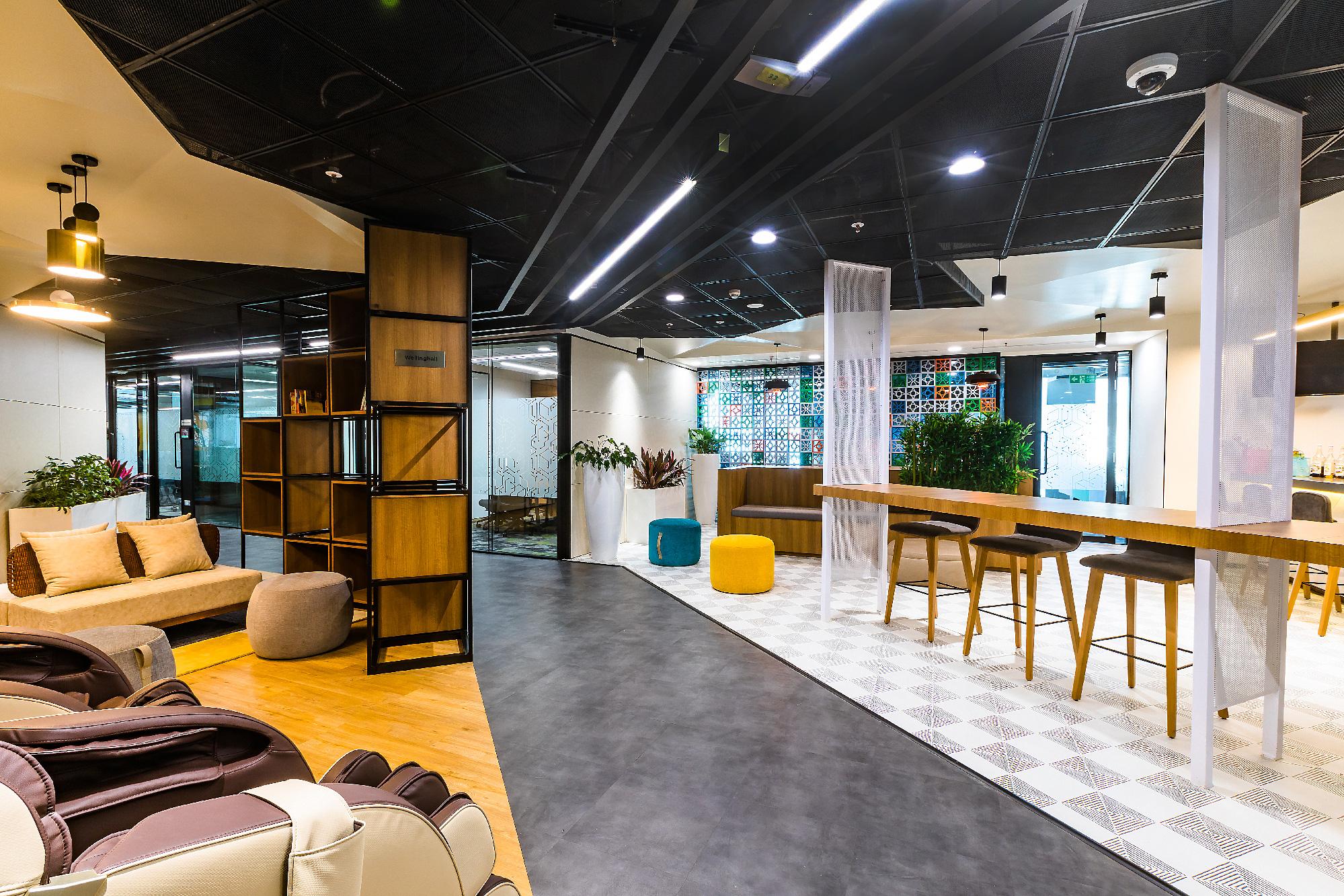




 In the Rubrik India office, Space Matrix gave special attention to the quality of indoor air, which is one of the top parameters evaluated by WELL certification. Active air purification systems were installed, including treated fresh air units, humidifiers, chemical and carbon filters in the air handling units (AHUs), as well as decentralized air purifiers throughout the office space. Fresh air fans were also installed in areas such as the café, kitchen, and other frequently occupied spaces, ensuring a 30% increase in fresh air flow above the ASHRAE 62.1 standards. Prior to occupancy, these spaces were properly flushed out and well-ventilated in keeping with LEED requirements.
In the Rubrik India office, Space Matrix gave special attention to the quality of indoor air, which is one of the top parameters evaluated by WELL certification. Active air purification systems were installed, including treated fresh air units, humidifiers, chemical and carbon filters in the air handling units (AHUs), as well as decentralized air purifiers throughout the office space. Fresh air fans were also installed in areas such as the café, kitchen, and other frequently occupied spaces, ensuring a 30% increase in fresh air flow above the ASHRAE 62.1 standards. Prior to occupancy, these spaces were properly flushed out and well-ventilated in keeping with LEED requirements.

